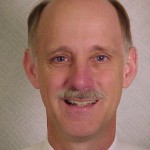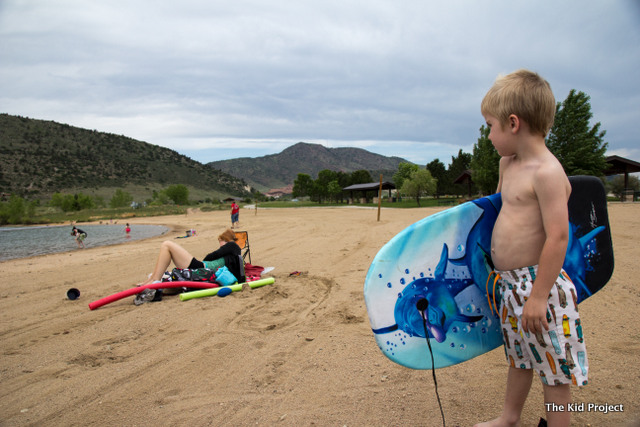For the last week we’ve been doing a series on fear. What we fear, what we shouldn’t, and how to help our kids overcome their fears. Today, we are going a different direction: how to deal with things we SHOULD fear – like extreme weather and the potential danger to our family.
A few weeks ago the Kid Project was approached by the National Weather Service as they are looking to spread the word about lightning safety… Something I can appreciate since I have been chased down a peak by more than one afternoon storm. I was able to interview a current lightning expert, John Jensenius, with some of my own questions.
 John Jensenius is the NWS Lightning Safety Expert. He coordinates outreach and awareness activities with the public. John’s expertise won him the National Weather
John Jensenius is the NWS Lightning Safety Expert. He coordinates outreach and awareness activities with the public. John’s expertise won him the National Weather
Association’s Public Education Award in 2005. In 2006, he was awarded a Department of Commerce Silver Medal, the Department’s second highest honor.
KP: The stats say “we often wait too long to get to shelter.” What is an easy-to-remember way to know when it is time to “hit shelter”?
John: The slogan that we encourage people to follow is “When Thunder Roars, Go Indoors!” Of course, it will take you more than a minute or so to reach a safe place, you’ll want to keep a watchful eye on the sky and start heading toward safety at the first signs of a developing or approaching storm.
KP: Does the counting thing work? Where you count between lightning strikes and thunder to calculate distance and hence risk?
John: If you count the number of seconds between the lightning and thunder, then divide by 5, you’ll get the distance (in miles) from you to that particular flash of lightning. However, it doesn’t tell you where the next flash will be. Normally, you can only hear thunder if the lightning is less than 10 miles away. It’s also true that lightning can strike outward 10 miles from the storm. That means, if you hear any thunder, even a distant rumble, you’re likely within striking distance of the storm and need to get inside immediately.
But counting is NOT a good way to determine risk. If you can hear thunder, you need to get to safety IMMEDIATELY.
KP: Are you more at risk up in the mountains or in a lake?
John: Neither is safe, both places have risks. If you’re in a lake (swimming or boating), your likely the tallest object in the area which makes you more vulnerable to a direct strike (which has the greatest potential to kill or seriously injure you). The big problem though is that people who have been struck are often left unconscious by the strike. Of course, being unconscious and in the water is a very bad combination. Even if you’re in a small boat, there’s a chance that you could end up in the water after being struck. In the mountains, if you’re above tree line, there’s also the possibility that you might get hit by a direct strike. Although you’re not likely to receive a direct strike below tree line, there’s still the possibility of getting hit by a side flash or ground current.
Finally, if you’re hiking in the mountains, another consideration is that you may be some distance from getting the help that may be needed to keep the victim alive. If you’d like to learn more about the way people are struck, please see:
http://www.lightningsafety.
KP: What constitutes an appropriate shelter? For instance, I’ve heard under a tree is safe, and under a tree is worse because it’s height can attract a strike. Thoughts for the high mountain hiker?
An appropriate shelter is a substantial building with electricity or plumbing with all doors and windows closed. A hard topped vehicle with windows closed is also a good choice. Picnic shelter, dugouts and other rain shelters without walls are NOT safe and in fact are lightning targets since they are often the tallest thing in the area.
There is no place outside that is safe in a thunderstorm. Lightning tends to strike the tallest object in the immediate area. While trees don’t attract lightning, they are often the tallest things around. Consequently, trees are often struck. A safe shelter has to be able to conduct the energy from a lightning strike around you and safely into the ground. Substantial buildings offer good protection because the wiring and plumbing in the structure can conduct the energy to the ground. Most small shelters are designed to keep you dry but do not provide any lightning protection. Hard-topped metal vehicles also provide good protection if the occupants are fully within the metal shell of the vehicle. If lightning does strikes a hard-topped metal vehicle, the lightning will find a path on the outside of the metal body to the ground…quite often through the tires.
As for high mountain hikers, they are certainly at risk if they are out hiking in a thunderstorm. The best advice is to avoid that situation by cancelling or postponing activities if thunderstorms are in the forecast and by planning the hike at times of the day when thunderstorms are not likely..
KP: What physical position should we be in [sitting, standing, grabbing our ankles] when waiting out a storm?
John: Reading a book while sitting on a chair in your living room would be a good choice. The bottom line is that you don’t want to be outside in a thunderstorm. If outside, we do recommend that people avoid things that would increase their risk of being struck. Those include being out in an open area, and being under or near the tallest trees/objects in the area.
You should not be standing still. Keep moving toward a safe building or vehicle.
KP: How long before/after a storm should we wait before re-entering water.
John: Before the storm, if there is any thunder or if the skies look threatening, get out of the water and get to a safe place immediately. Always wait 30 minutes after the last thunder clap to return to normal outside activities provided that the sky doesn’t looks threatening.
The National Weather Service also shared with us these stats:
Did you know that?
• Over 80% of lightning victims are male.
• Over 60% of lightning fatalities happen when people are engaged in leisure activities.
• About 34% of victims are outside far from safe shelter engaging in popular summertime activities such as bicycling, hiking, camping, and fishing.
• Most lightning victims are close to safe shelter but wait too long to get there.
• Lightning injuries often leave victims with serious life-long disabilities that can destroy their health, affect their ability to work, and devastate their families.
 For more information please visit the National Weather Service’s lighting safety page. Happy adventuring and stay safe!
For more information please visit the National Weather Service’s lighting safety page. Happy adventuring and stay safe!



The perfect is the enemy of the good. By not providing an answer for the best thing to do for people who find themselves many hours or many days from a building when thunder strikes, this expert is failing to provide advice to those who may need it most. Does he think people never take multi-day trips?
In my area, thunderstorms are extremely rare (we have other risks), but I think this post does a disservice to anyone doing more than casual trips where they are common.
Erin, you are right is your assessment that the post does not address the person who is on longer or multi-day trips. It was meant for the casual family hike. However, I too was a little unsatisfied with the answers. I read a great post about the same thing – only addressing those backcountry or high country hikers who are no-where near shelter. Here it is! http://www.theactivetimes.com/survive-caught-thunderstorm